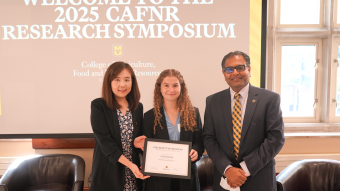August 4, 2020
Contact: Pate McCuien, 573-882-4870, mccuienp@missouri.edu
A new University of Missouri Trulaske College of Business study suggests that when different countries make similar economic decisions during financial crises, the global economy improves much more quickly than if they act in their own self-interest.

The study, conducted by Trulaske College of Business Professor Felipe Bastos Gurgel Silva, compared the economic turmoil of the COVID-19 pandemic and the 2008 financial crisis.
He said the key difference between the two economic disasters is that in 2008, the U.S. policy response was mostly unilateral, meaning the Federal Reserve Board acted on their own. This is different from multilateral responses, which occur when countries implement similar economic policies through their central banks.
“During the 2008 crisis, America was just acting on its own as it was the epicenter,” said Silva. “However, with the rise of this pandemic, we are seeing more and more central banks act the same way. We wanted to see how that was affecting the entire global economy.”
After the pandemic began to unfold, many countries (including the U.S.) decided it would be best for their economies to increase their money supply and inject liquidity into their markets. Most countries did this at relatively the same time. The researchers found the multilateral response following the COVID-19 crisis is generally having a positive effect toward not only advanced economies, but also emerging markets. In fact, the disaster risk of financial markets in the U.S. was lower when the Fed acted multilaterally, with other markets in mind.
Though the 2008 financial crisis and the global pandemic the world faces today are very different, both required “unconventional monetary policy” in response. “Unconventional monetary policy” refers to when a central bank expands its money supply by injecting liquidity into the economy through the purchasing of securities, such as stocks and bonds. It is often used when interest rates approach zero, as cutting interest rates to stimulate the economy is no longer an option. Silva says that while this response by the Fed in 2008 was partially successful, there were some drawbacks as well.
“The policy in 2008 was effective in mitigating the disaster risk in the U.S. However, it had a significant impact on the foreign exchange rate of the U.S. dollar,” Silva said. “That can definitely harm an emerging economy’s exports.”
The unilateral response by the U.S. in 2008 reduced the disaster risk in the U.S. but, on average, ended up increasing the risk of a financial disaster in emerging market economies. This time, however, the COVID-19 pandemic has been met with a multilateral response, in which many central banks have put in place similar policies. The results of such policies have so far been positive in mitigating disaster risk and limiting the effect on exchange rates throughout the world. Silva is careful not to weigh in on policy, but he says these findings are extremely important when it comes to the world economy.
“We are typically cautious in providing policy recommendations given that we are contrasting two episodes whose differences go beyond the nature of policy responses,” Silva said. “However, the benefits of a multilateral response are not restricted to emerging markets but to advanced economies alike. They can help everyone.”
Silva worked in concert with Gustavo Cortes of the University of Florida, George Gao of T. Rowe Price* and Zhaogang Song of Johns Hopkins University.
* The opinions expressed are solely the authors' and do not express the views of T. Rowe Price Associates, Inc.



